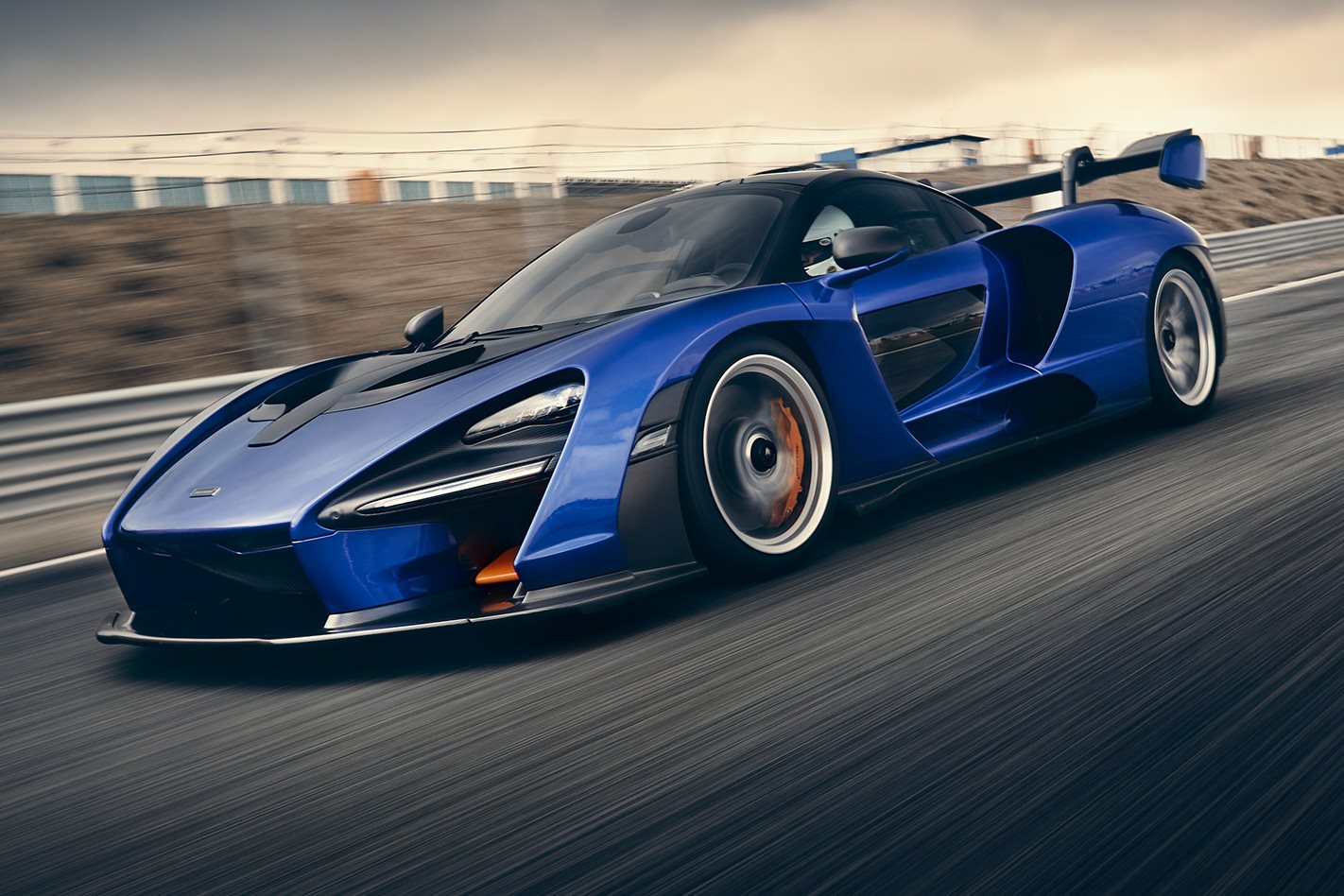WHAT IS IT?
It’s the most potent McLaren ever to wear number plates. Designed for the track with only the smallest concessions for road use, the Senna joins the legendary P1 as the second addition to McLaren’s Ultimate Series. It’s also a collection of mind boggling numbers: 597kW. 800Nm. 800kg of downforce. A limited run of just 500 and an asking price of AUD $1.6m, all of which are sold.
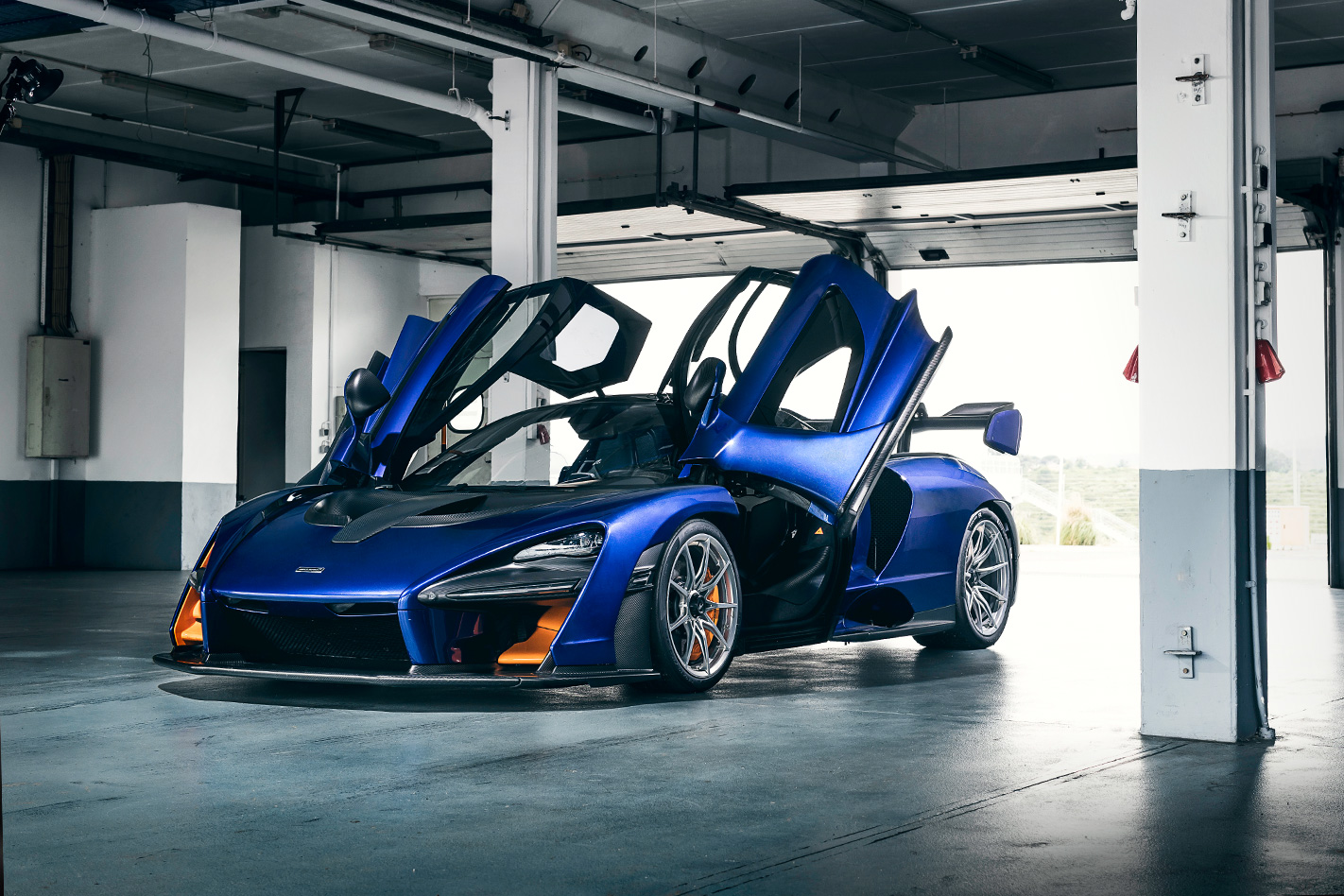
WHY ARE WE DRIVING IT?
Aside from some limited seat time in a pre-production mule at Silverstone last month, this is our first fully immersive Senna experience in a customer ready car. And where better to do it than Estoril, the iconic and decidedly old-school circuit where Ayrton Senna took his first Formula 1 win. Bring on the race suit and HANS device…
THE WHEELS VERDICT
Outrageous to behold and breathtaking to drive, the McLaren Senna redefines that old cliche of ‘race car for the road’.
PLUS: Braking performance; aero smarts; agility and immediacy; accessibility; depth of dynamic talent MINUS: V8 sounds good, not great; price; sold out
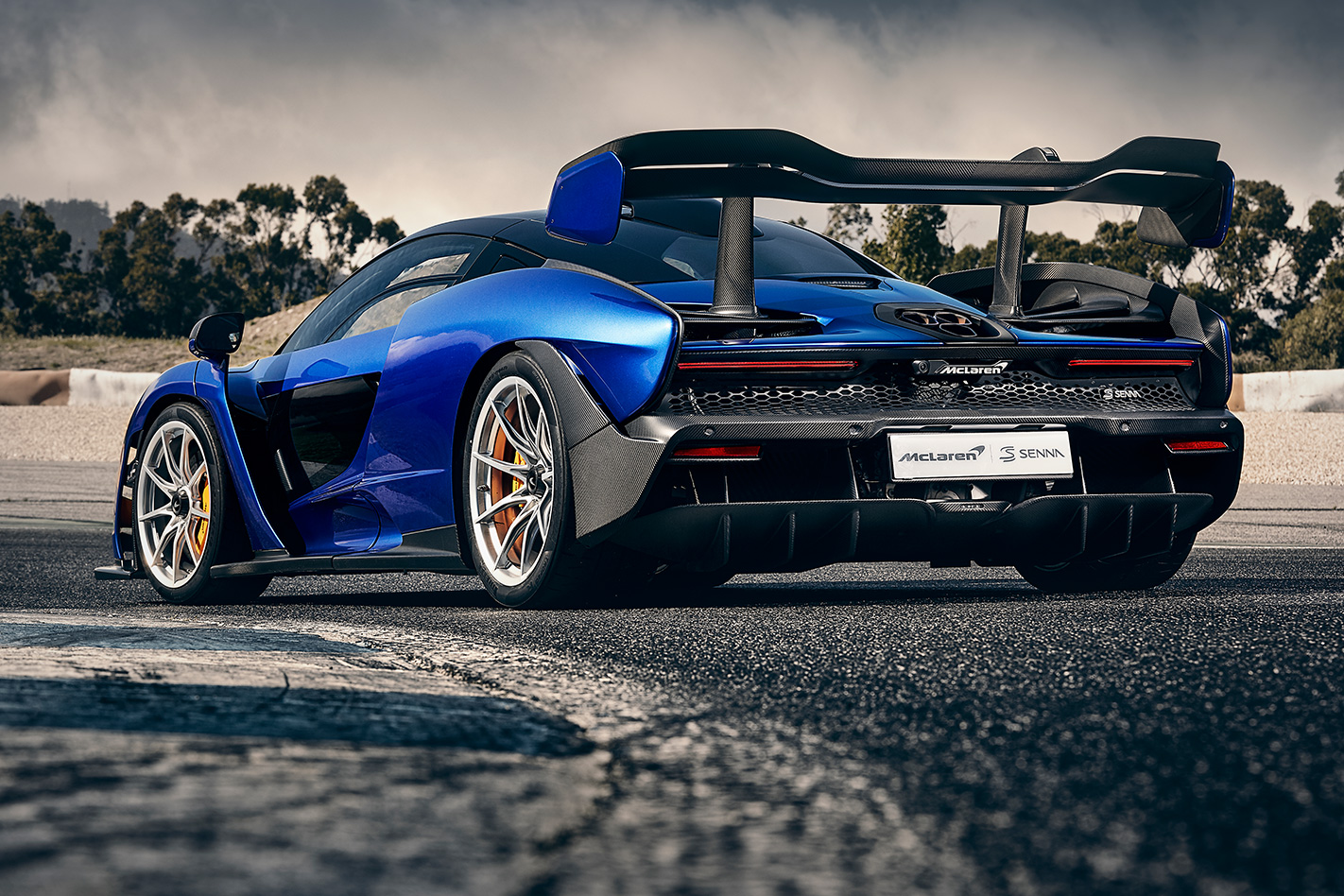
THE WHEELS REVIEW
IT FLIRTS with the surreal to slip into the blade-like seat of the Senna, the colossal dihedral door stretching skywards as my belts are tugged and tightened by a bald Brit with a sweaty dome. It’s hot at Estoril. Baking heat rushes into the cabin as I process my surroundings: the dished, thinly rimmed steering wheel. The narrow slit of the instrument cluster. The floating centre screen that juts from the dash. The sheer quantity of exposed carbonfibre.
It’s sparse and fastidiously functional, though such is the nakedness of its purpose and ambition that it verges on beautiful. Comfortable too. I just have time to digest the reclined rake of the fixed carbon seat, the vast reach adjustment of the wheel and the flat plane of the pedal set before the door is clipped shut (at 9.9kg, or half the weight of the door on a 720S, it whooshes closed instead of thudding home) and I stretch for the starter button. This is an experience in itself. Unable to reach the dash I catch myself before remembering the red ignition switch is mounted on the roof, just ahead of a small black button that reads ‘Race’. My gloved finger prods the starter. Silence. A single, high-pitched chime. There’s a flurried whir of starter motor and the 4.0-litre V8 catches, the dry-sumped, twin-turbo unit settling quickly into a monotone idle that has the whole cabin fizzing with high-frequency vibrations.

I’ve been thinking about this moment for weeks. Obsessing over it. As you would too, if given the chance the drive the fastest and most singularly focused McLaren ever to wear number plates. The fact we’re at Estoril, the iconic, undulating and unforgiving circuit where Ayrton Senna snatched his first Formula 1 victory only adds to the occasion. Though unlike you perhaps, I haven’t been bubbling with excitement as the anticipation grew. I’ve been twitching and jangling with nerves. The source of my trepidation is easy to trace. The last McLaren I drove – a malevolent grey 720S – delivered a moment of such savage launch-control acceleration and (thanks to a bumpy surface) huge armfuls of corrective lock at big speeds that it left me a little shell-shocked.
The Senna’s promise of weaponising that violence in a package worth AUD$1.6m with 220kg less, 69kW/30Nm more (total outputs are 597kW/800Nm) and GT3 levels of downforce, was, I’m not ashamed to admit, a little intimidating.
Strangely, though, hitting ‘D’ on the finger-like carbon control panel, which moves fore-and-aft with the seat, is a centring and almost calming experience. I’ve already driven the circuit in a 720S to learn the layout, so the initial fear-factor has waned, though even in pitlane it’s clear the Senna is a markedly different beast. With Race mode engaged, the whole car hunkers down on its hydraulically controlled suspension, the nose dropping by 39mm, the rear by 30, making it feel like a sprinter tensing in the starting blocks.

It’s noticeably stiffer than the 720S, even as we trundle down the pitlane, bumps transmitting jolts of vertical movement, the electro-hydraulic steering twitching and squirming as I adjust to the immediacy of the controls. The brakes instantly feel more race than road car; the brake booster is the same unit found in the P1 GT R and the pedal is extremely firm, almost dead to the first touch. The differences build as I leave the pits and feed in second gear. Vibrations rise with the climbing rpm, the softer and comparatively refined cabin of the 720S replaced by resonances that start in your legs and settle, deliberately I’m sure, in the small of your back. It’s visceral, direct, connected; oozing with its own personality that’s miles away from the common McLaren criticism of feeling too clinical; for lacking the intangibles that set Ferrari and Porsche apart.
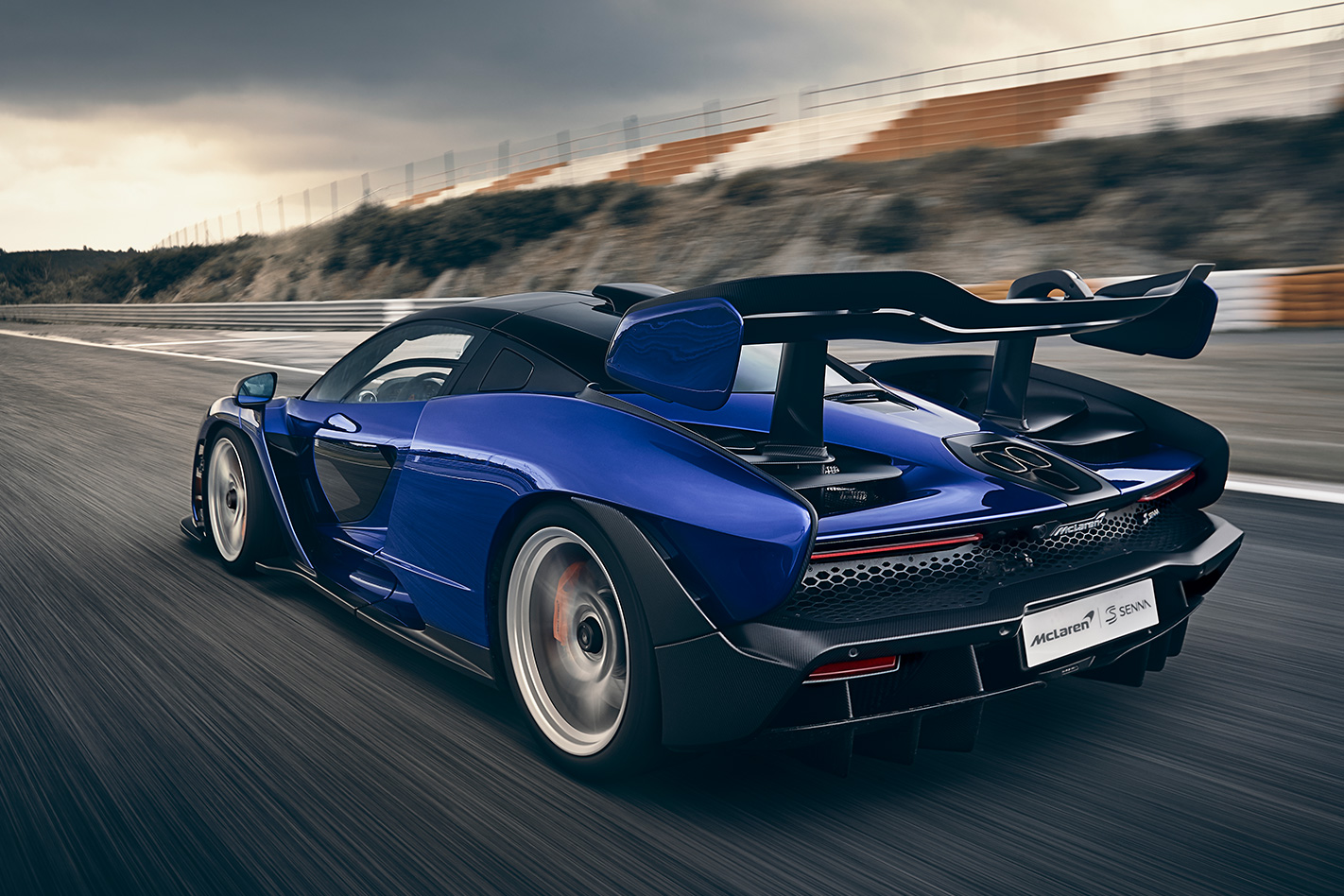
The first lap is a blur of shifting frames of reference. I’d spent weeks thinking the Senna would feel like a sharper, more aggressive 720S, only to have that mental preparation shattered within two corners. The step change is shocking.
There’s more grunt, sure, and the Senna’s V8 does respond with greater ferocity and urgency, but it’s the feedback from the controls, the quicker steering’s sensitivity to load, the innate sense of agility, balance and grip, and the fearsome body control that require fast and total recalibrations. This isn’t a road car honed for the circuit of the ilk of a 911 GT3 RS or 488 Pista. It’s in a different league; a barely sanitised racer that just happens to wear number plates.
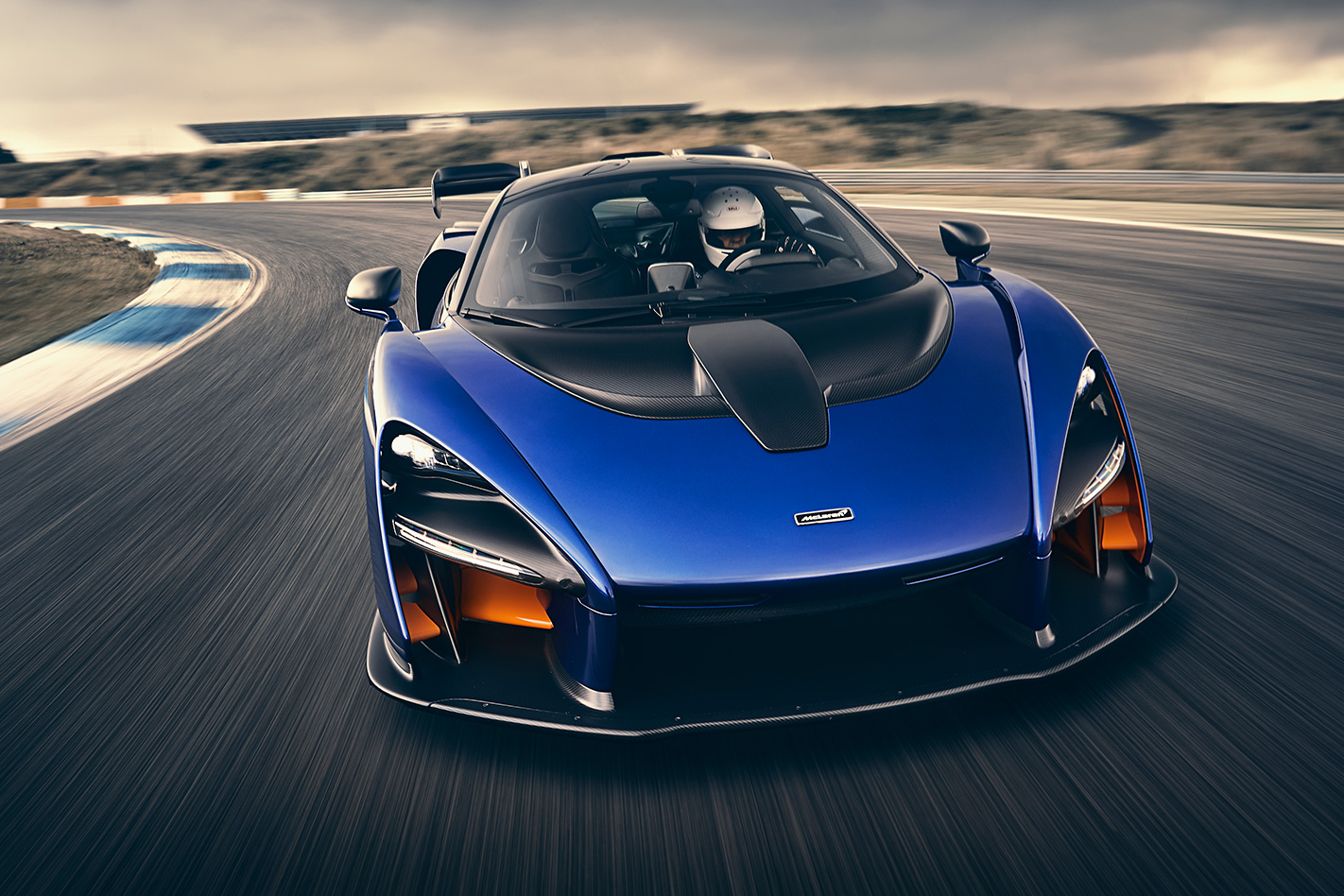
Then I arrive at the first proper braking zone. The Senna’s carbon ceramic stoppers are constructed using a new technique that takes seven months to create a single disc; seven times longer than conventional carbon brakes. McLaren engineers are cagey about explaining the exact process (I glean it’s the melting of the material that takes so long) though the result is a package that’s 60 percent stronger and operates at temperatures around 150 degrees cooler. They’re smaller than you’d expect too, with each disc measuring 390mm, yet the stopping performance is immense. There are two big stops at Estoril – into Turns 1 and 6 – and it’s telling that in a car with this level of performance that the most addictive thing isn’t how it piles on speed, but how it loses it. More than once I thought I’d hopelessly overcooked it into T6 as I hammered the left pedal just after the 100m board from 260km/h, only to marvel at how it stops. No pitching of the nose. No wriggling or writhing from the rear axle. Just brutal and unflappable stability and retardation. McLaren claims the Senna will go from 200km/h-0 in 100m; some 16m shorter than a P1. 100km/h-0 takes 29.5m.
Central to this, of course, and to all facets of the Senna, are aerodynamics. Managing airflow is the sole reason the way the Senna looks the way it does and while it’s far from pretty, I don’t think I’ve ever seen a more visually interesting car. It’s captivating to behold as your eyes trace the grooves, slats and vents that force the air under, into or around the body. Core to the aero performance is the huge front splitter, which has 150mm more overhang than the P1, and the positioning of a large, single radiator in the centre of the front bar (replacing the two units packaged behind the headlights in the 720S) so that air is channelled through the gaping side intakes and to the active fins that lurk within.

Perhaps the most beautiful element is the enormous double rear diffuser, forged from a single piece of carbonfibre that stretches as far forward as the rear-axle line. It’s that dominating rear wing, however, that creates the most downforce, accounting for 500kg of the Senna’s 800kg total. It too is active, capable of sweeping through 25 degrees to add or reduce downforce, though this implies the Senna plays with the air as it flows over it. It doesn’t. It bashes it into submission. It’s a character trait best observed from outside the car, where unlike a 720S, which whooshes past as it blasts along the pit straight at more than 250km/h, the Senna sounds as though it’s tearing a hole through the atmosphere, the air making a tortured noise like the edge of a sail rippling before it pulls taut.
What defines the experience, however, is how the Senna shifts the aero balance between the axles, working in conjunction with the latest version of McLaren’s Race Active Control II system. Damping rates, roll rates and downforce distribution are all managed seamlessly in real time, which, combined with the braking performance, compresses the phases of the corner from a structured process (brake, turn in, add power), into one where the edges overlap. Because the front aero blades bleed off downforce as you enter a turn, rather than pinning the nose and unsettling the rear, you have the confidence to carry the brake, and more mid-corner speed, deep into the corner, unafraid that you’ll suddenly swap ends. Get too greedy with the throttle on corner exit or carry a fraction too much lock as you feed in the power, especially in low-speed turns where there’s less aero, and it will oversteer, though even then it’s not the snappy, heart-in-mouth experience I was expecting from a high-downforce machine with a 315-section rear tyre. Instead it breaks away cleanly, the onboard electronics hardly blinking as I quickly feed in half a turn of opposite lock.
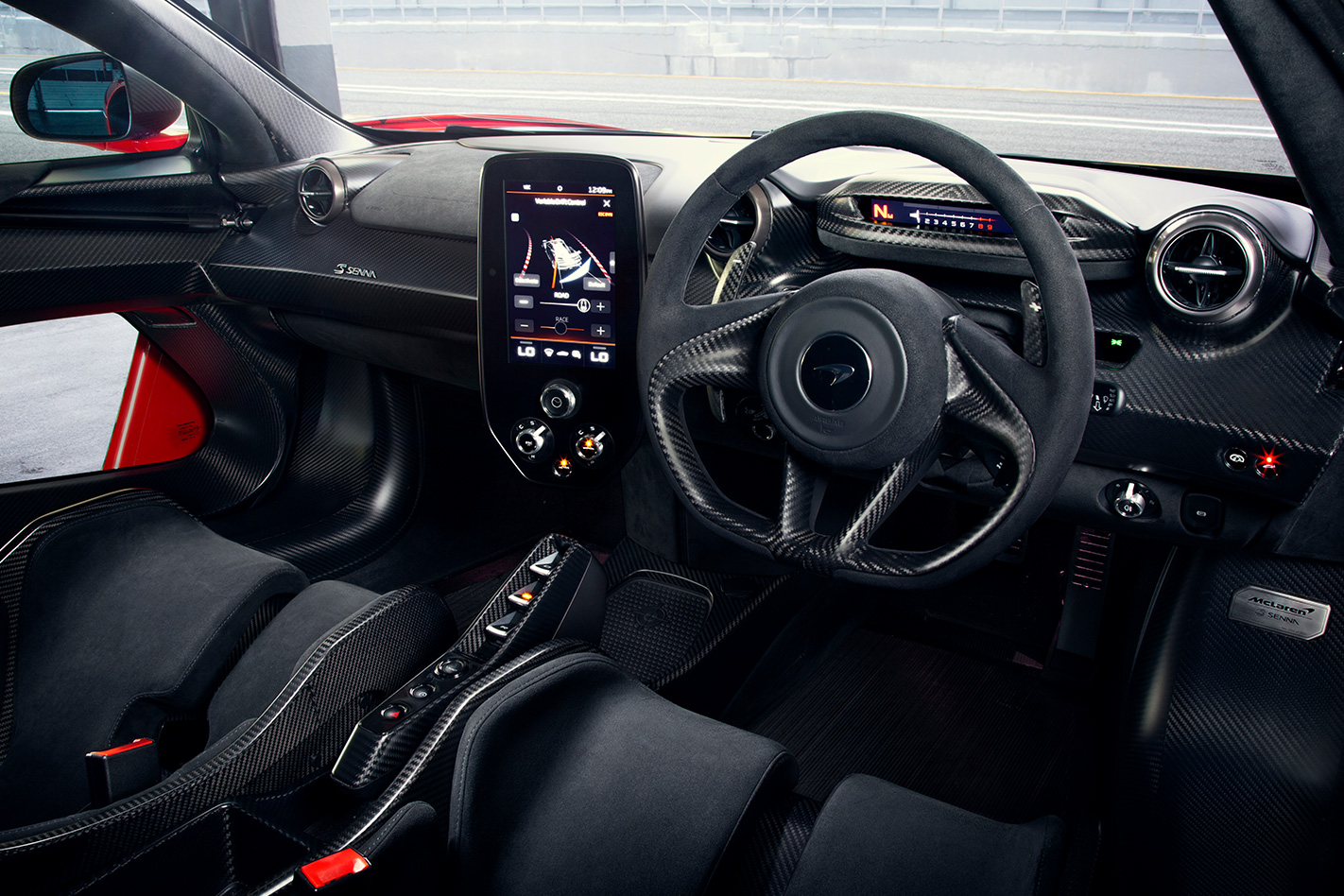
The tyre is a specially developed Pirelli P Zero Trofeo R – 245/35R19 up front and 315/30R20 out back – and ultimately, despite their prodigious purchase once up to temperature, they are the limiting factor to the Senna’s ability. Even so, McLaren says the Senna is six seconds a lap quicker at Estoril than a 720S. I can only imagine what it’d be like on slicks.
With my two six-lap sessions over, I spend a long time in the pits trying to process what I’ve just experienced. No road car I’ve driven approaches the Senna’s depth of ability and I’m left with the frustrating feeling that I’d only just begun to scratch the surface. The fact that it’s easy to drive very quickly shouldn’t be misconstrued with thinking its full potential is readily accessible. Instead it feels a car you could spend years learning as you delve further and further into its dynamic range. It’s complex, multi-faceted and unique which, given its name, is wholly fitting.
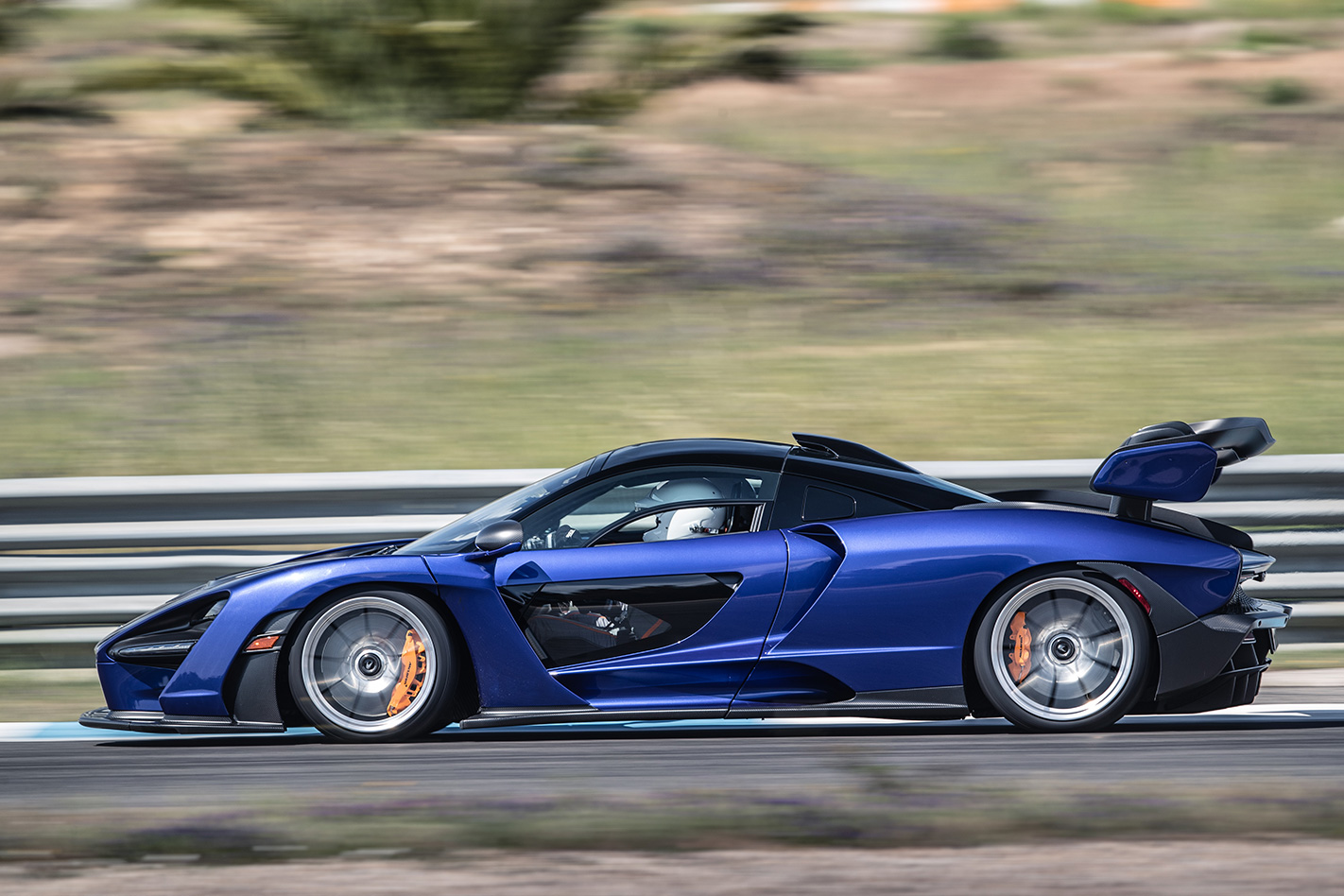
SPECS
Model: McLaren Senna Engine: 3994cc V8 (90°), dohc, 32v, twin-turbo Max power: 597kW @ 7250rpm Max torque: 800Nm @ 5500-6700rpm Transmission: 7-speed dual-clutch Weight: 1198kg (dry) 0-100km/h: 2.8sec (claimed) Economy: 12.4L/100km Price: £908,000 (AUD$1.6m) On sale: Now


